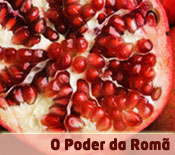

Unfortunately, when Moses went up on Mount Sinai to receive the commandments, the materialistic, animalistic instincts, combined with crowd mentality, took over, and the people created a golden calf. Wheat, on the other hand, is the constant striving to grow and develop, to nourish the human in us, the higher “self.” And there was that first moment, “the early wheat harvest,” when the Jewish people, fresh out of slavery in Egypt, exclaimed in one voice,” Give us the Torah! We will do it! All your commandments we will do and we will hear!” That was on Shavuos.

Barley is our material, animalistic instinct for self-preservation, for food and shelter, for a warm bed and a nice car, and a bigger house, and a larger bank account. They represent the seven areas of human lives, the modes and characteristics that make us what we are. These seven, though, have been singled out for their special holy properties. There were quite a few other grains and fruit, and a bunch of vegetables as well, that were cultivated on that small but very fertile slice of land. The actual wheat harvest was concluded and celebrated on Sukkos.īesides the agricultural timing of the two harvests, there is a much deeper connection between the two holidays, and the seven species are not simply the ones that grew in Israel. It was both the end of barley harvest and the beginning of wheat harvest. Shavuos is one of the three most important holidays of the year, when the entire population was expected to make pilgrimage to the Temple and bring the first fruit of the new harvest of seven species cultivated in the land of Israel. The real reason goes back to the Torah, where the land of Israel is called “a land of wheat, barley, grapes, figs and pomegranates, a land of olive and honey.” This interesting combination of two grains and five fruits, known as sheva minim (seven species), was celebrated two times during the year: first on Tu B’Shvat, the New Year of the Trees, and the second time on Shavuos, the giving of the Torah festival. The end of October – beginning of November was already pretty chilly, so a thick, hot,and filling soup was always welcome, as the Sukkos meals are supposed to be eaten outside, in the booths especially constructed for this purpose. However, there are many other fall and winter soups, just as comforting and filling, so why barley?
SHEVA MINIM SERIES
Traditional Jewish comfort food, with history more ancient and undoubtedly more venerable than the ubiquitous “Jewish penicillin” – chicken soup, Mushroom Barley soup was served in my family during the holiday of Sukkos, the final one of the series of High Holidays.


 0 kommentar(er)
0 kommentar(er)
